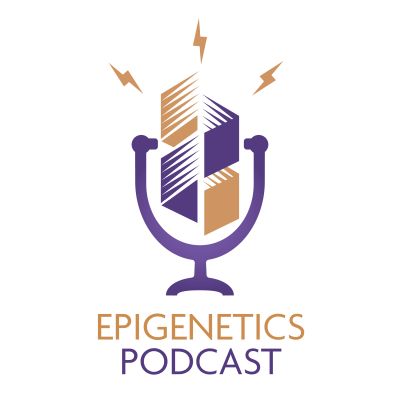episode 26: The Role of Non-Histone Proteins in Chromosome Structure and Function During Mitosis (Bill Earnshaw)
In this episode of the Epigenetics Podcast, we caught up with Professor Bill Earnshaw, Wellcome Trust Principal Research Fellow at the University of Edinburgh, to talk about his work on the role of non-histone proteins in chromosome structure and function during mitosis.
In the beginning of Bill Earnshaw's research career little was known about the structure that holds the two individual sister chromatids together. This led to Bill pioneering in the use of autoantibodies for the identification and cloning of key chromosomal proteins. He used serum from a scleroderma patient to identify and clone human centromeric proteins, which paved the way for the molecular characterization of the metazoan kinetochore.
Later the chromosomal passenger complex (CPC) was identifies in his lab using biochemical studies. This complex contains Aurora B kinase plus its targeting and regulatory subunits INCENP, Survivin, and Borealin/Dasra B.
More recently, he teamed up with the laboratories of Job Dekker and Leonid Mirny. In this collaboration they used a system for synchronous mitotic entry developed by Kumiko Samejima.These studies used a combination of chemical biology, gene targeting, Hi-C genomics, and polymer modeling to explore the roles of condensin I and condensin II in mitotic chromosome formation. The results revealed that during prophase interphase higher-order chromatin organization breaks down and subsequently condensin II and condensin I work together to form hierarchical loops that give chromosomes their compact morphology.
In this interview, we discuss the story on how centromeric proteins were first identified using sera from human scleroderma patients, how the chromosomal passenger complex was discovered, and how condensin I and II work together in chromatin loop formation.
References
- Johan H. Gibcus, Kumiko Samejima, … Job Dekker (2018) A pathway for mitotic chromosome formation (Science (New York, N.Y.)) DOI: 10.1126/science.aao6135
- A. F. Pluta, A. M. Mackay, … W. C. Earnshaw (1995) The Centromere: Hub of Chromosomal Activities (Science) DOI: 10.1126/science.270.5242.1591
- Nuno M. C. Martins, Jan H. Bergmann, … William C. Earnshaw (2016) Epigenetic engineering shows that a human centromere resists silencing mediated by H3K27me3/K9me3 (Molecular Biology of the Cell) DOI: 10.1091/mbc.E15-08-0605
- Oscar Molina, Giulia Vargiu, … William C. Earnshaw (2016) Epigenetic engineering reveals a balance between histone modifications and transcription in kinetochore maintenance (Nature Communications) DOI: 10.1038/ncomms13334
- Jan G Ruppert, Kumiko Samejima, … William C Earnshaw (2018) HP 1α targets the chromosomal passenger complex for activation at heterochromatin before mitotic entry (The EMBO Journal) DOI: 10.15252/embj.201797677
Contact
- Active Motif on Twitter
- Epigenetics Podcast on Twitter
- Active Motif on Linked-In
- Active Motif on Facebook
- eMail: podcast@activemotif.com
